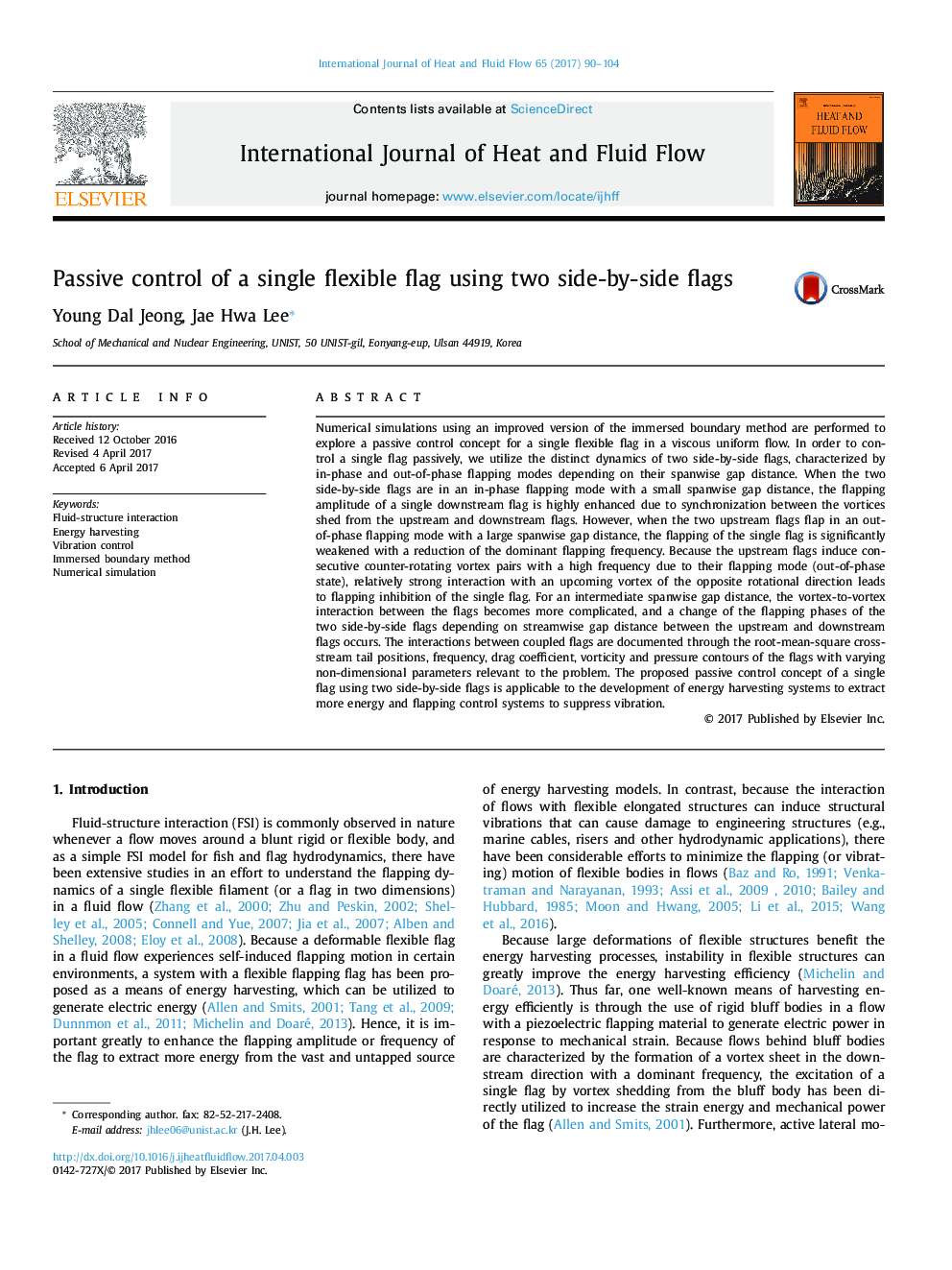| Article ID | Journal | Published Year | Pages | File Type |
|---|---|---|---|---|
| 4993119 | International Journal of Heat and Fluid Flow | 2017 | 15 Pages |
Abstract
Numerical simulations using an improved version of the immersed boundary method are performed to explore a passive control concept for a single flexible flag in a viscous uniform flow. In order to control a single flag passively, we utilize the distinct dynamics of two side-by-side flags, characterized by in-phase and out-of-phase flapping modes depending on their spanwise gap distance. When the two side-by-side flags are in an in-phase flapping mode with a small spanwise gap distance, the flapping amplitude of a single downstream flag is highly enhanced due to synchronization between the vortices shed from the upstream and downstream flags. However, when the two upstream flags flap in an out-of-phase flapping mode with a large spanwise gap distance, the flapping of the single flag is significantly weakened with a reduction of the dominant flapping frequency. Because the upstream flags induce consecutive counter-rotating vortex pairs with a high frequency due to their flapping mode (out-of-phase state), relatively strong interaction with an upcoming vortex of the opposite rotational direction leads to flapping inhibition of the single flag. For an intermediate spanwise gap distance, the vortex-to-vortex interaction between the flags becomes more complicated, and a change of the flapping phases of the two side-by-side flags depending on streamwise gap distance between the upstream and downstream flags occurs. The interactions between coupled flags are documented through the root-mean-square cross-stream tail positions, frequency, drag coefficient, vorticity and pressure contours of the flags with varying non-dimensional parameters relevant to the problem. The proposed passive control concept of a single flag using two side-by-side flags is applicable to the development of energy harvesting systems to extract more energy and flapping control systems to suppress vibration.
Keywords
Related Topics
Physical Sciences and Engineering
Chemical Engineering
Fluid Flow and Transfer Processes
Authors
Young Dal Jeong, Jae Hwa Lee,
